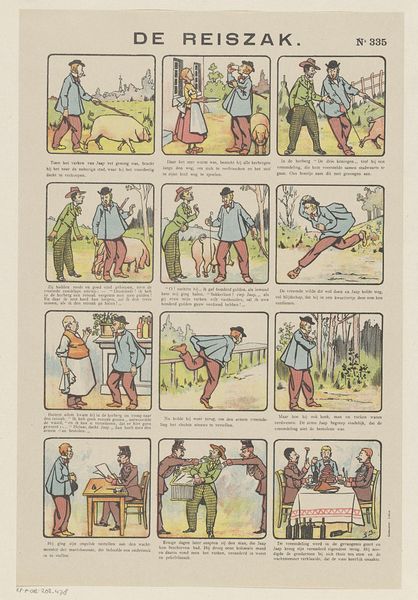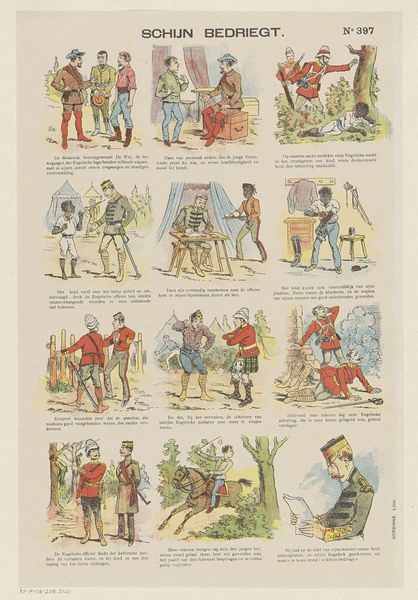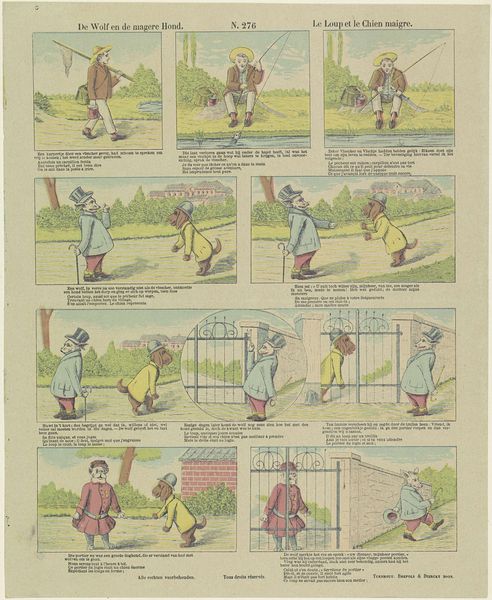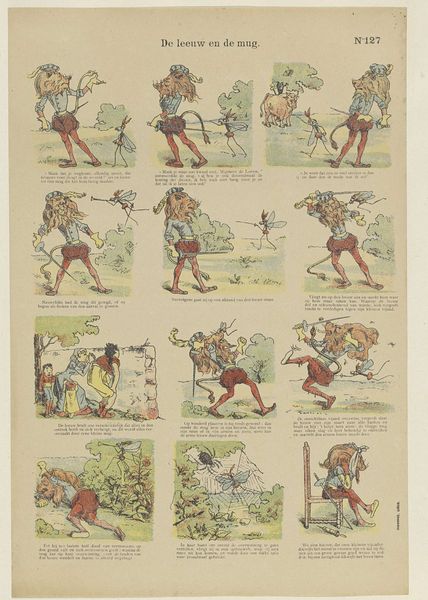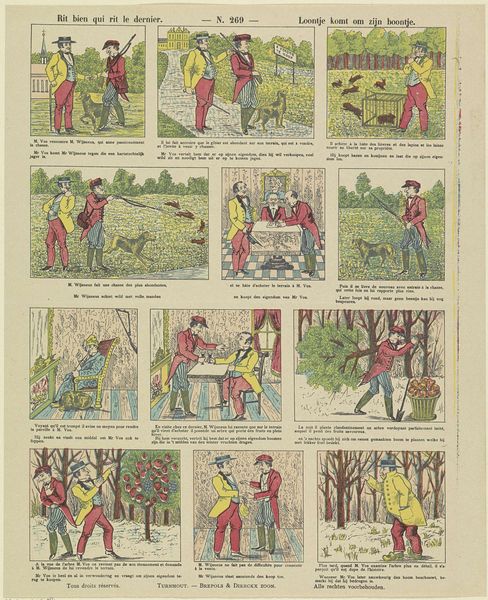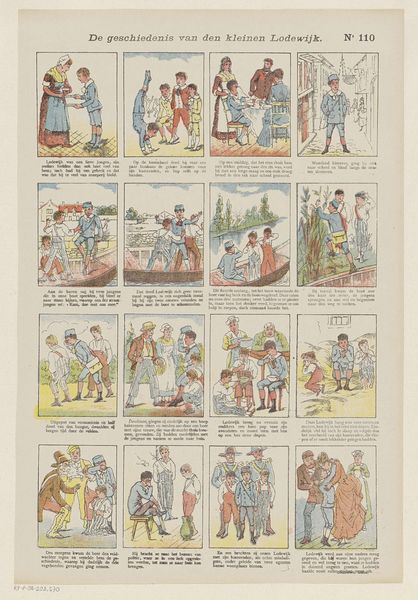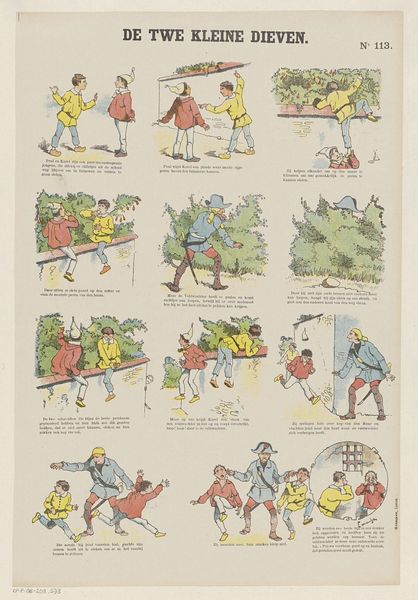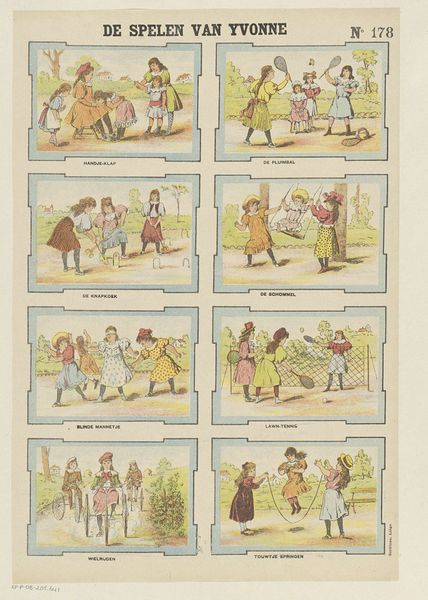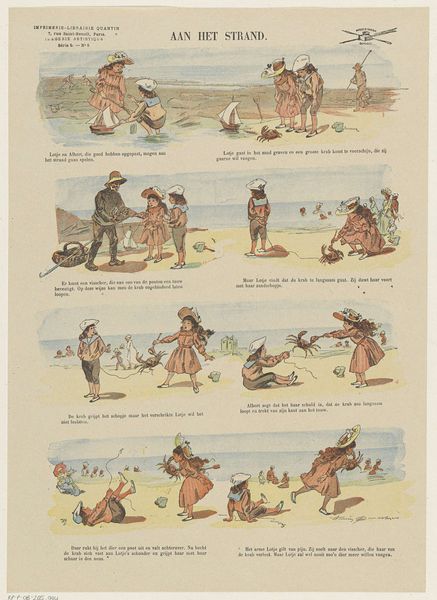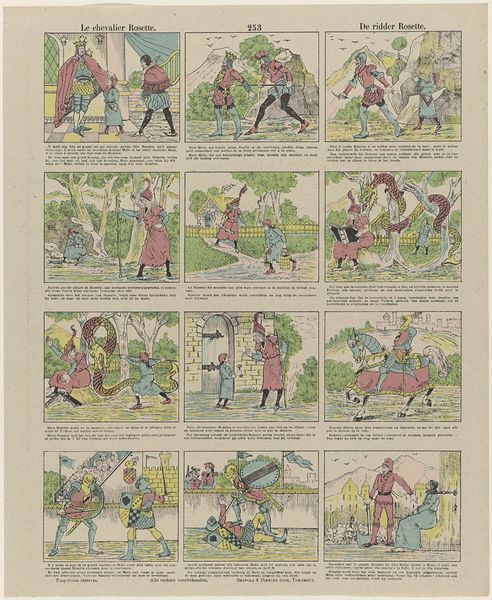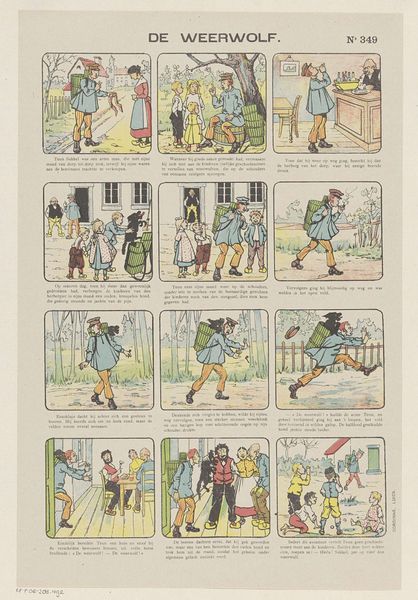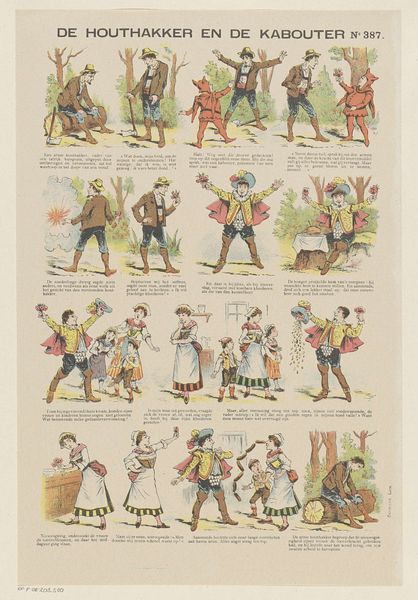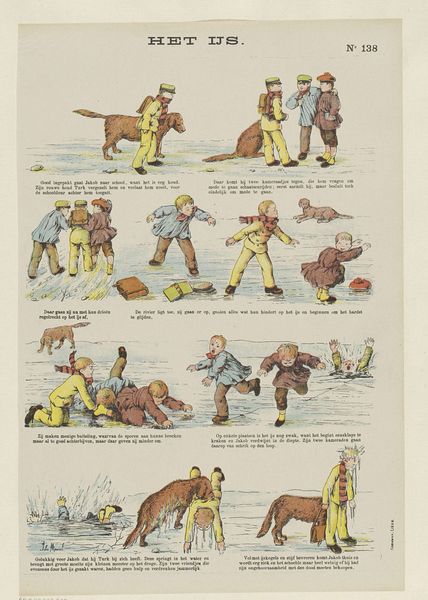
Dimensions: height 400 mm, width 269 mm
Copyright: Rijks Museum: Open Domain
Curator: Here we have “Eene hengelpartij naar eenden”, which translates to "A fishing trip for ducks", a print created sometime between 1894 and 1959 by the artist known only as Monogrammist G.J. It’s laid out like a comic strip. My immediate impression is that it’s trying very hard to be funny, with mixed success. Editor: Well, the materiality of it strikes me first. A mass-produced print suggests it was meant for wide circulation, for the working classes, perhaps? A cheap form of entertainment made for the masses and reflective of social norms. Curator: Absolutely. You get a very "folksy" kind of narrative, complete with slapstick. Each little scene has a caption below, like a visual pun taken a bit too literally. I can imagine this might've amused folks. Editor: Did it though? Look closer – at the duck catching “technology” for example. A makeshift rod, probably stolen, right? What about the repercussions, landing the character behind bars by the final frame? We should think about that embedded socio-economic critique—maybe he's highlighting the inherent inequality in class divisions by looking at the artist’s labour. Curator: Now you’re seeing deeper things here. It has got a moral center in that it presents him getting justly punished. His absurd hunt for ducks lands him in jail... Perhaps it’s just teaching that poaching, at least in cartoon form, gets you nowhere good. Editor: Or the justice system preys disproportionately on the working class. One panel depicts him confronted by presumably more affluent citizens. He did nothing that might affect them directly; are they really invested in waterfowl? The artist has deliberately deployed mass reproducibility as an artistic medium for delivering the subject. Curator: Maybe so. He did cause harm—or was at least attempting it—to defenceless ducks! From a craft perspective, you know what, the water effects here—these simple wavy lines—actually communicate "water" quite effectively. But on the social criticism level? Perhaps your lens sees more deeply than mine. Editor: Art flattens when one considers the making of the image and those to whom the piece might appeal or who may be excluded. Now *that* creates layers to it. I mean, for some people, artmaking is labour and its analysis *always* returns there. Curator: Maybe next time I'll bring along a class-war decoder ring and we can parse another panel! Editor: Well, hopefully folks were given food for thought, no matter the intention of the Monogrammist GJ, of "Eene hengelpartij naar eenden."
Comments
No comments
Be the first to comment and join the conversation on the ultimate creative platform.
